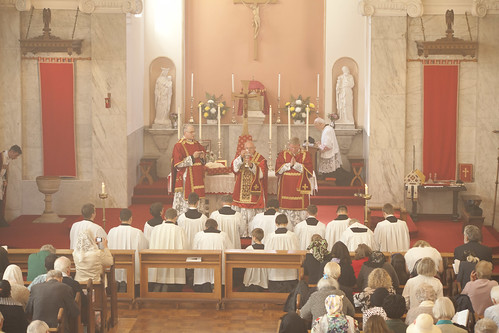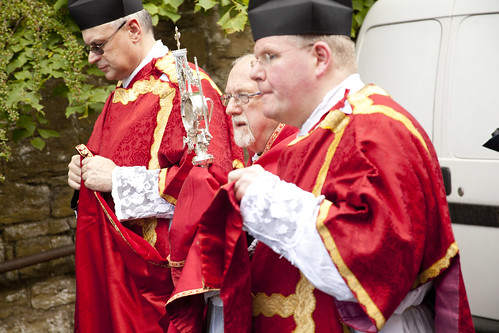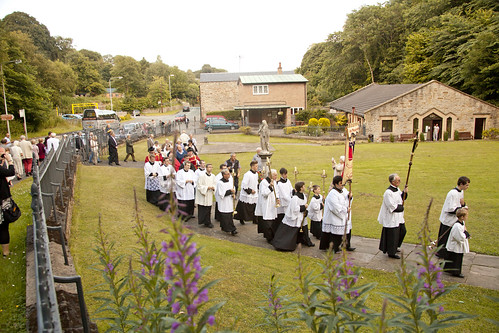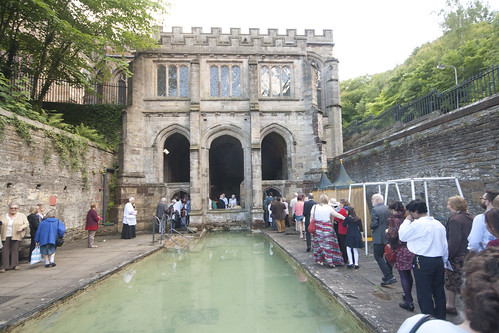Yesterday I went with a friend to the Latin Mass Society's annual Pilgrimage to Holywell in North Wales. The two of us made the same excursion in 2012, as I recounted in Pilgrimage to Holywell and there are links to pictures of that occasion in Pictures of the Holywell Pilgrimage. I have also written about the shrine in my post St Winefride from 2010.
The journey to and from Holywell necessitated a twelve hours round trip, with a lot of driving for my friend, but leabving Oxford at about 9.30 in the morning we managed very well. We looped round and through Chester before getting over the river Dee and onto the road into North Wales - the landscape of the Dee estuary is now very much a casualty of refining and related industries, and the roads misled us at one point so we had to backtrack to get on back the right road. Nonetheless we got to Holywell in decent time for the Mass which was celebrated at 2.30 in the nineteenth century Catholic parish church. Outside it is a somewhat austere and awkward looking building, but the interior is handsome and well furnished and decorated. There is an account of the church here, and of Fr Beauclerk (a descendent of King Charles II), the parish priest who in the 1890s particularly developed the pilgrimage tradition at Holywell, here. There is an online account of the focus of the pilgrimage, St Winefride's Well here.
The Mass was celebrated by the Abbot of Belmont, the Rt. Rev. Paul Stonham OSB. He entered the church in rochet and mantelleta, and was vested at the faldstool, and similarly divested, after the celebration. In his sermon he drew attention to that fact that in aland of so many saints, St Winefride was unusual amongst Welsh saints in having sucha widespread devotion, far beyond the Principality.
Images; lmschairman.org
There are more photographs of the pilgrimage in an album on Flickr here.
Whilst at the Well I dipped my new rosary in the pool to take something of this holy place with me. Holywell has been a place of pilgrimage for over a thousand years, if not in fact since the mid-seventh century and the times of St Winefride and her uncle St Beuno.
Before we left we looked in the old parish church of St James, which adjoins the Well chapel. Apard from its plain late-medieval tower from the outside it appears a rather dour eighteenth century building, but onc einsdie we found it has a fine interior, with very handsome collanaded galleries from when the town was a growing industrial town with metalworking industries. This was an extra treat for us, as well as looking at the outside of the upper part of the Well chapel, now in the care of Cadw.
Our return journey took us back round the outskirts of Chester and then across Shropshire. This is not a county I know well, and I was intriguesd to skirt the edge of Newport. That was because I have Oxgord friend s who come from it, and from their description of the town some of us are incline dto wonder if it really exists. I can now say I have seen the sign posts, but not yet been into it. Does it really exist - or is it apolite fantasy? The question remains. We also passed the signs for Lilleshall abbey and Boscobel,of Royal Oak fame, and I had aglimpse of the splendid medieval church at Tong, which I have visited many years ago, just before we joined the M56. using that and other motorwatys we were back in Oxford for supper.









No comments:
Post a Comment